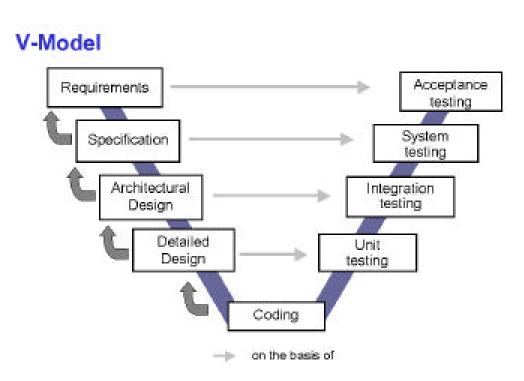Verification and validation is the generic name given to checking processes which ensure that the software conforms to its specification and meets the needs of the customer.The system should be verified and validated at each stage of the software development process using documents produced in earlier stages. Verification and validation thus starts with requirements reviews and continues through design and code reviews to product testing.Verification and validation are sometimes confused, but they are different activities (SQA, n.d.).
The difference between the two can be summarised as follows:
- Validation: Are we building the right product?
- Verification: Are we building the product right?
| Criteria | Verification | Validation |
|---|---|---|
| Definition | The process of evaluating work-products (not the actual final product) of a development phase to determine whether they meet the specified requirements for that phase. | The process of evaluating software during or at the end of the development process to determine whether it satisfies specified business requirements. |
| Objective | To ensure that the product is being built according to the requirements and design specifications. In other words, to ensure that work products meet their specified requirements. | To ensure that the product actually meets the user’s needs, and that the specifications were correct in the first place. In other words, to demonstrate that the product fulfills its intended use when placed in its intended environment. |
| Question | Are we building the product right? | Are we building the right product? |
| Evaluation Items | Plans, Requirement Specs, Design Specs, Code, Test Cases | The actual product/software. |
| Activities |
|
|
(STF, n.d.)
Every testing execution should follow some sequence and V Model is the perfect way to perform the testing approaches. In V Model there are some steps or sequences specified which should be followed during performing test approach. Once one step completes we should


Refereneces
Naveen. (n.d.). What is V Model in software testing and what are advantages and disadvantages of V Model. Testingfreak. Retrieved from: http://testingfreak.com/v-model-software-testing-advantages-disadvantages-v-model/
SQA. (n.d.). Verification and Validation. Outcome 3: Test the Completed Product. Retrieved from: http://www.sqa.org.uk/e-learning/SDPL03CD/page_16.htm
STF. (n.d.). Verification vs Validation. Software Testing Fundamentals. Retrieved from: http://softwaretestingfundamentals.com/verification-vs-validation/
